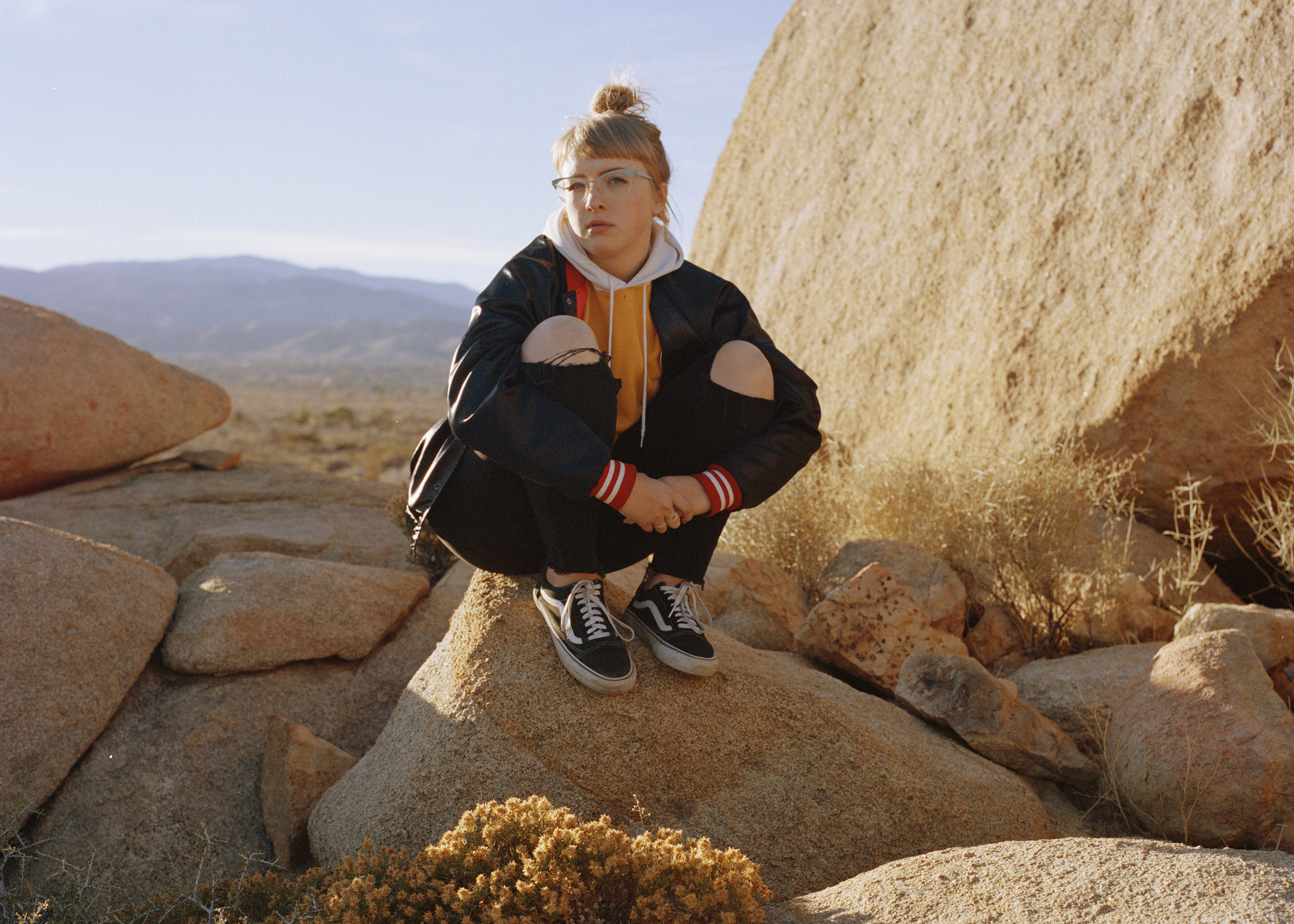
- Interview by Tina Essmaker May 3, 2016
- Photo by Jillian Newman
Tuesday Bassen
- illustrator
Tuesday Bassen is an award-winning illustrator living in Los Angeles. Her clients include Lucky Peach, Playboy, The New Yorker, United Nations, Nike, Adidas, and more. Tuesday also owns an online store where she sells illustrated wares and is opening a brick and mortar shop in LA soon.
Describe your path to what you’re doing now. I grew up in Nebraska where I went to an arts-focused program for high school. After that, I went on to get my BFA at the Minneapolis College of Art and Design (MCAD). When I graduated, I got a project to do a small part of a corporate window display, which paid me $1,000. I was really excited because I had never seen that much money in my life, and I decided to move to New York with it. (laughing) I shared a borrowed air mattress with a friend for the first few months. I figured if I could make that work, then I’d stay in New York and give it a shot.
I lived in New York for four years and tried a lot of different avenues for illustration. During that time, I visited Los Angeles and decided that LA offered the lifestyle experience I was looking for, so I left New York and moved to the West Coast about a year and a half ago.
Once I got to LA, I pursued more product work versus editorial illustration, which held my focus before. The first large product order I did was for Urban Outfitters. In late 2014, I made 300 planters by hand for their website, which taught me a lot about what I do and don’t want to do. Instead of creating every single item, I focus on design now. I also have my online store and I’m opening up a physical location here!
Let’s go back to your childhood. When you were younger, did you have any inclination that you’d be doing what you’re doing now? Or did you consider other careers? As a kid, I was super involved in the arts because my mom owns two pottery shops. Art was always a huge part of my life, but I didn’t realize that it was something I could make into a career.
Initially, I was interested in becoming a foreign diplomat because linguistics is a creative field. I didn’t consider illustration an option at the time, so I explored foreign diplomacy for a while. I became captain of the debate team as a freshman, spent weekends doing mock congress, and I even participated in a cool government-sponsored program to study abroad in Russia. My experience in Russia was really eye-opening because I stayed in an impoverished industrial city that was far removed from the beauty of Moscow or Saint Petersburg. Think of it as the Detroit of Russia, but Russian—so it’s like the depression of an abandoned American industrial city times 50. Once I returned and reevaluated what I wanted, I enrolled in a public high school for the arts.
Did you have any insights about yourself in Russia that made you realize you didn’t want to pursue foreign diplomacy anymore? After that experience, I quickly realized that wasn’t what I wanted to do. If I had gone to another country, it might have been different, but a lot of the romance was stripped away in Russia. I faced the realities of diplomacy: it’s not always in a country that’s romantic. I was more of a wimp than I thought I was, too. (laughing) The whole experience was good for me because it helped me appreciate what I had and led me toward focusing on my gifts in the arts instead.
So you decided to take a different route to pursue art as something you were going to make a living at. Yeah, once I got back, I felt like it was time to look at other avenues. I was interested in the arts-focused program because it had a collegiate setting. It was actually an arts and humanities-focused school, so there was still a heavy interest in other cultures and we read literature from non-traditional American studies. Through being in a discussion-based environment, I realized that art was really for me after all.
When you finished high school, how did you decide to study at Minneapolis College of Art and Design? When I hear people talk about the best art schools in America, they almost never mention MCAD, which is a shame because I had such a fantastic education there.
I went to MCAD because I didn’t feel like I was ready for New York yet. I wanted to hone my skills a little bit more and then go to New York. Minneapolis College of Art and Design was super welcoming and all the students I talked to were really excited about their classes. That felt unique because when I toured Rhode Island School of Design, the students there seemed a little less enthralled. Everyone at MCAD also seemed really excited to have me there, and I craved that nurturing environment. It was such a close-knit campus—they only have 700 students at a time—so it lent itself to an intimate atmosphere.
“So much of the work I do now was fueled by a period where I decided that I couldn’t care anymore. I felt so deeply depressed during my last winter in New York that I reached a breaking point, and it ended up being positive for me.”
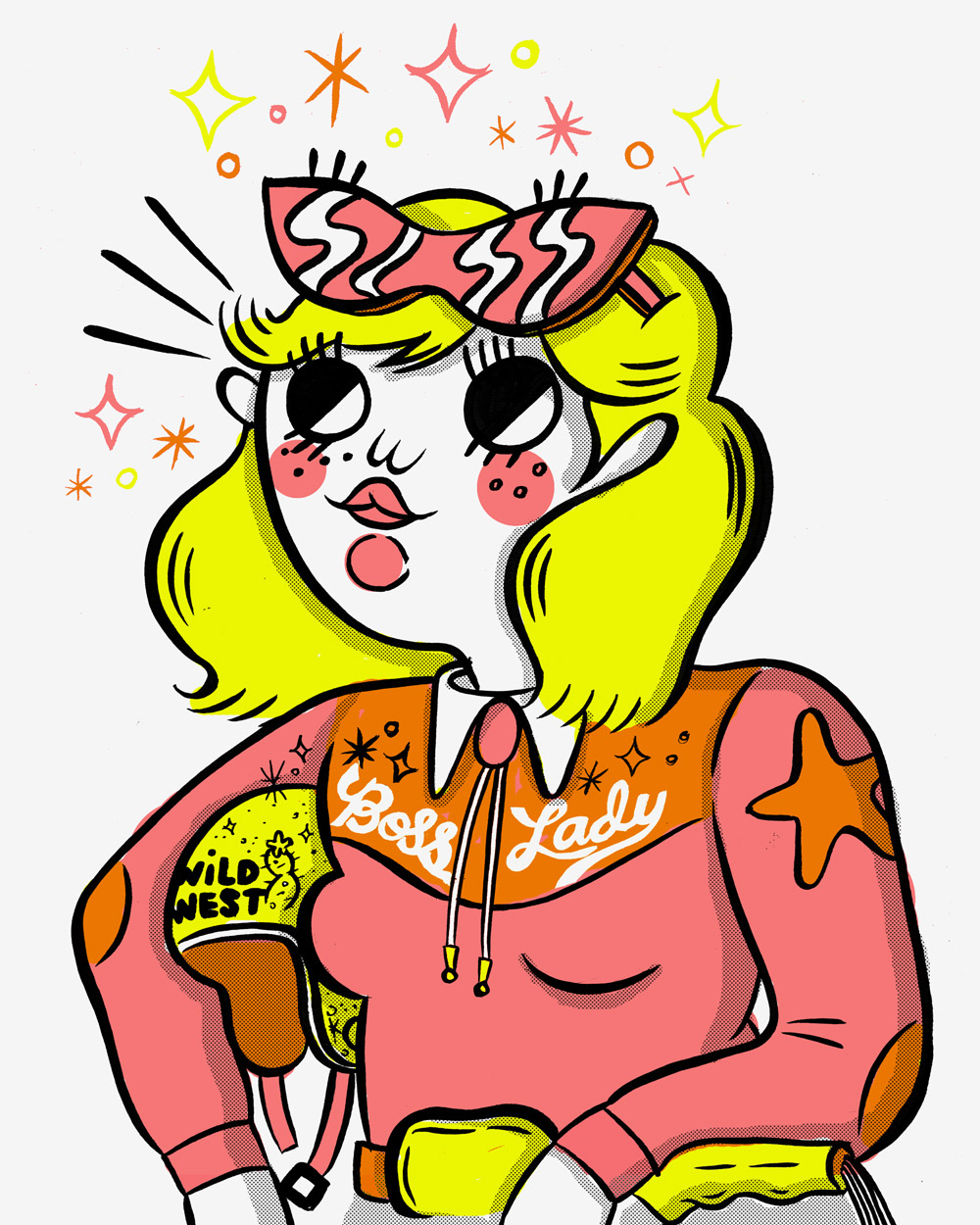
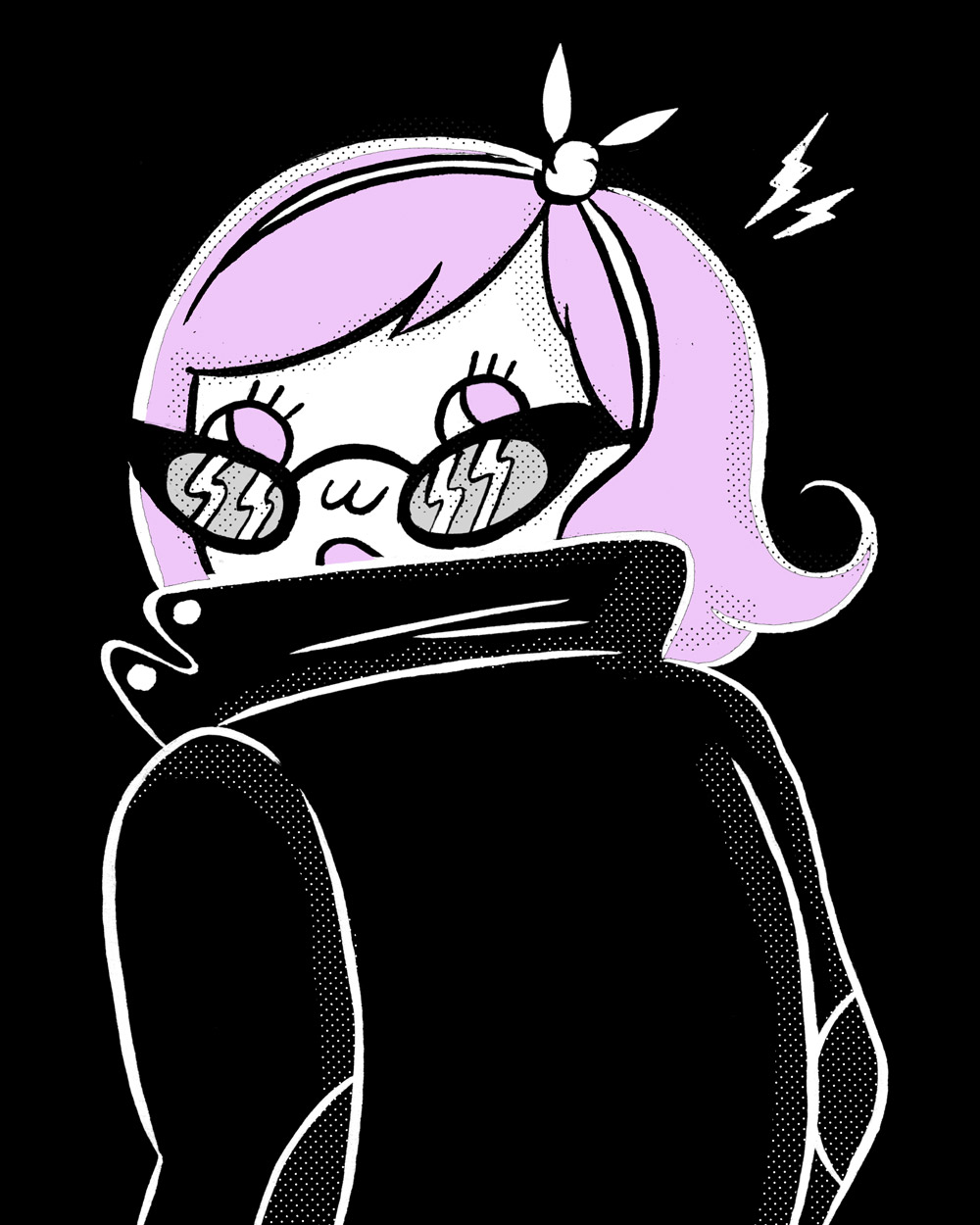
After college, you moved to New York. Was it a conscious choice for you to go out on your own as a freelancer right away or did you consider working somewhere? I was offered a job in Minneapolis while I was still in school, but I’ve always had the urge to be my own boss. I decided that if I wanted to, the job offer would essentially still be in Minneapolis after three months of trying out New York.
I tried a lot of different things in New York. I tried only freelancing. I tried freelancing for editorial clients and ad agencies. I also have a degree in design, so I tried focusing more on design when I wasn’t making ends meet with just illustration.
I even tried to develop a children’s app called Homes with a company called Tinybop. That was a really interesting experience because I had never worked with a team for longer than a few months. I was with a team for a year and it taught me so much about how to present myself and manage expectations in the creative world. After doing that animation job, I had a clearer sense of what I wanted to be doing, but I didn’t quite know if New York fit into that.
On a whim, I went to a music festival in LA. When I landed, I knew right away that it was what I had been looking for. I had been driving in New York instead of taking the subway because I enjoyed the freedom it allowed. I like being able to pick up and leave whenever I want and I hated feeling trapped on a tiny island in New York. I felt claustrophobic—even in my apartment I still felt like I was in the bustle of New York. I also really liked that everyone in LA seemed to be doing their own thing: it’s very DIY here. The art and illustration scene in New York is about pre-existing institutions that other people want you to ascribe to; in LA, people are starting their own groups or putting on their own shows or opening their own shops. There is a kinetic energy and no one is asking permission.
I finished up my lease in New York and moved to LA about five months later. It was great because I took a two-month break between New York and LA to visit my parents in Nebraska. I stayed with them while I worked on that project for Urban Outfitters. That gave me a lot of time to think about what kind of career I wanted to have and how I wanted to approach it. The boredom of being in Nebraska for two months really set me in motion much faster, too, because I didn’t have any distractions. I started making products that I wanted instead of thinking about what a client might want.
As soon as I got to LA, I was so excited to see people and have any opportunities, so I organized pop-up shops and gallery shows right away. I try to put on a pop-up shop about once a month. It’s been great!
Is it only your stuff, or do you curate items from other artists as well? Both. I rent space and have a table and then I might invite a dozen other people to have a table, too.
What’s exciting about opening my storefront is that my products and work have taken off to the point where about 60% of my sales are in Southern California. It makes sense to have an actual store here. I want to have an amoebic space that I can tear down quickly and invite other people to show in. It’ll give me the ability to keep hosting pop-ups, but in a more permanent location.
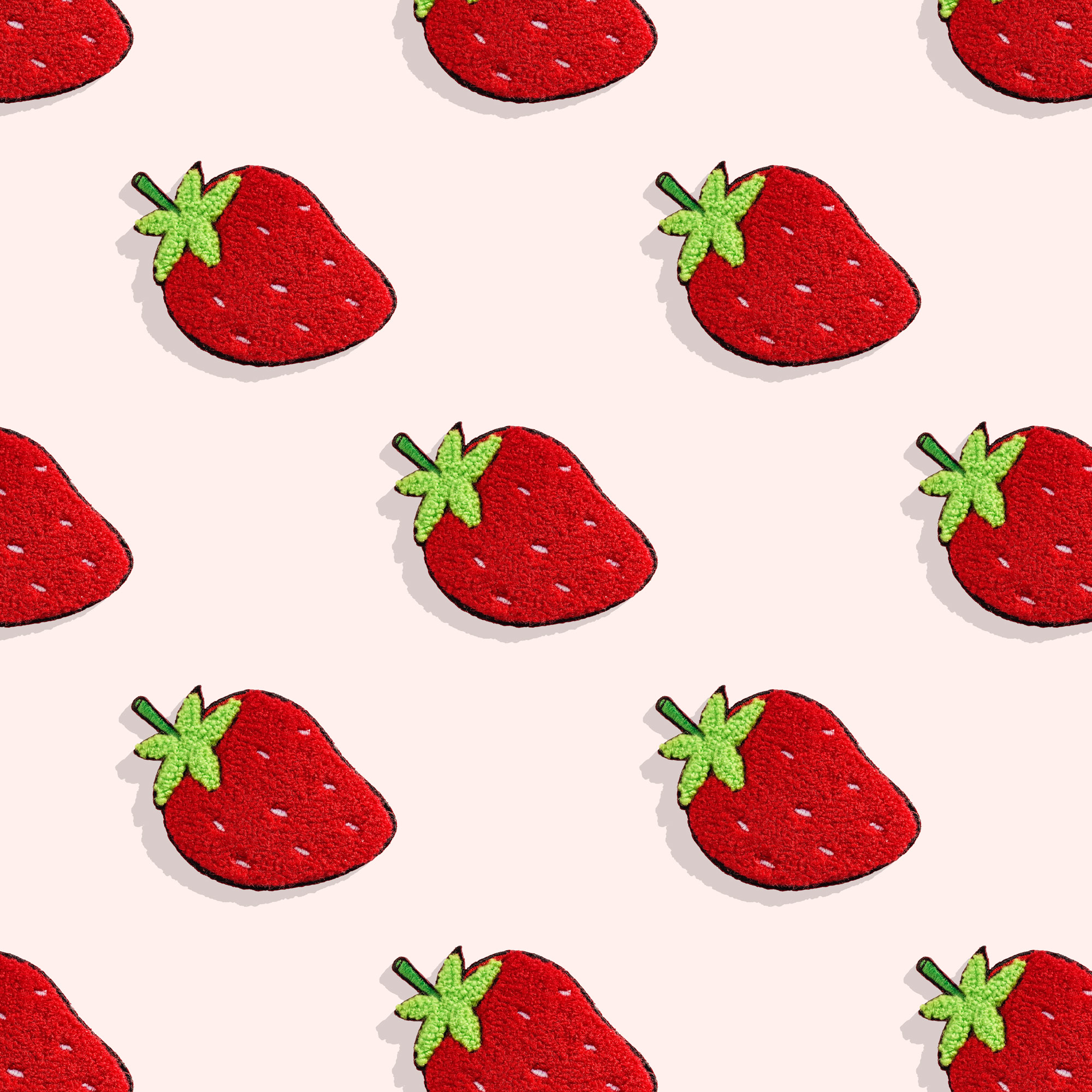
Did your move to LA feel like a big risk? It really did. I knew in my heart that I wanted to be in LA, but at the same time, I felt like I had already laid a foundation for my personal and professional life in New York. I only knew one or two people in LA. Whenever I told friends in New York that I was going to move, they’d ask what my plan was and I’d say, “I don’t know, but I need to go.” They’d say things like, “Well, I know you’re not that stupid, so what’s your real plan?” (laughing) But I didn’t know. I was kind of mobile as it was, so I knew I’d figure it out.
I started to second guess myself, especially after colleagues I trust and admire acted like I was doing something crazy. It seemed like such a big leap, but as soon as I got to LA, it felt so right. I feel really comfortable and confident here. There wasn’t much of an adjustment period. It instantly seemed like I had made the right decision.
It’s a scary decision. There is this line of thinking that all of the opportunities are in New York, so there’s no reason to live anywhere else, but that’s not true. That was exactly what I thought when I lived there: I thought New York was the center of the universe and that I’d be moving away from that. I thought, “What am I doing? Am I going to ruin my career forever by moving away?” But that’s a very New York way of thinking. When you live there, it’s the center of the universe and everything revolves around being there. But once you leave—at least in my case—you realize that New York is an exciting place, but it’s not the exciting place. There is a lot of room in LA to make your own path and that’s the most exciting part to me.
It sounds like you already have opportunities in LA that would be too expensive in New York, like opening a brick-and-mortar shop. How fun is that? In New York, that would take loads of money. Yeah, or investors or something. In New York, I felt like I was just managing to eke out an existence. I still kind of felt that way when I first moved to LA, but the affordability of this city has really allowed me to grow and change in ways that I definitely wouldn’t have in New York.
Have you found a creative community in LA, and is that something that’s important to you? Yeah, absolutely. In fact, do you know Little Friends of Printmaking?
I don’t, but I should. They’re an illustration duo that I discovered—and idolized—when I was in high school. I thought, “Oh, my god, these guys are the best! Maybe someday I’ll be as good as they are.” They were people for me to look up to. Now we host pop-ups and plan events together. It is really gratifying that people I looked up to so much when I was 18 are just as wonderful and talented as I thought. I get to foster a community with them.
It’s been easy for me to find a creative community here in LA. The whole experience was really charmed: I fell into a good community, which I probably have the internet to thank for.
“I feel so much healthier now and a large part of that is because I’m making the work I wanted to all along. I get to be who I am. A few years ago, I wouldn’t have said I was being disingenuous, but I think I was. I didn’t feel confident and I was searching for who I was. I don’t feel that anymore.”
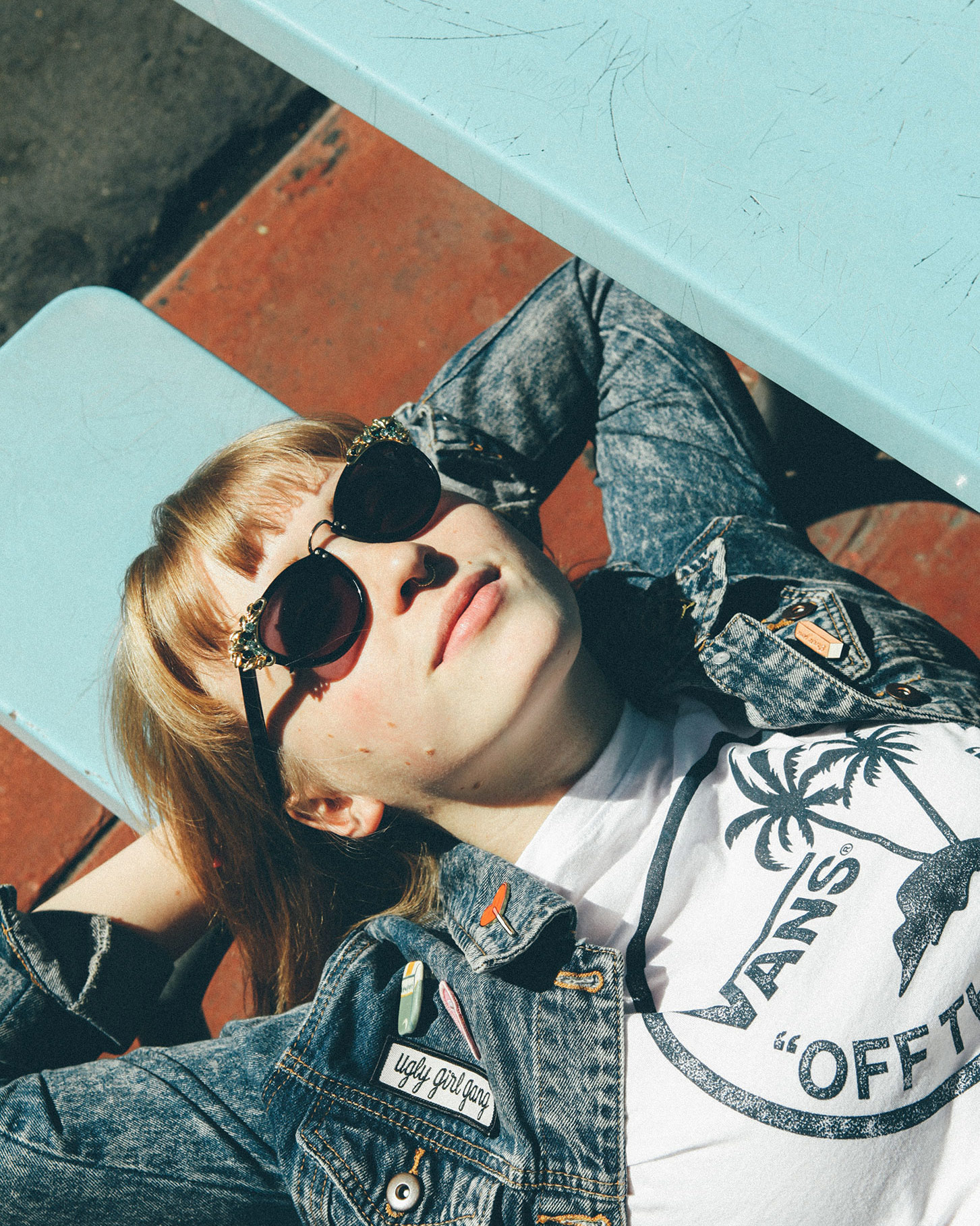
Yeah, that’s so cool. Do you find that being in LA now influences your creativity or work differently than New York? It’s definitely different. So much of the content of my work is now LA-centric. I have fallen so in love with this city. I feel like my drawings never had a New York backdrop before, but 90% of my new work has an LA backdrop or is influenced by 1970s Venice Beach. I’m making a bikini-rainbow-roll style print with a gradient that fades from blue to yellow to pink and is full of palm fronds, cigarette butts, and broken bottles. That print is what I like about LA: it’s colorful and beautiful, but it’s also kind of junky and dirty. It’s not too clean; it’s not too much like paradise.
So LA is really your muse. It’s been waiting for you, and now you’re there. Yeah, exactly.
You have a great style and a unique aesthetic. How did you find that and when did you become confident in your style? Did it take a long time? When I was graduating from school, I felt super confident in my style. The work I made around that time is similar to the work I make now, but my confidence took a dip after I graduated. I divorced myself from that style for about a year and instead made really washy-looking artwork because there were other artists in New York who I thought were really great, but I didn’t know how to appreciate their work without letting it consume me.
For a long time, I felt like I made work that was really disingenuous to me. That was partly because I thought my style wasn’t very marketable and I was so broke that I thought my only choice was to be marketable. I made a lot of work for family magazines and stuff, which wasn’t interesting to me, and I think it showed. I reached a point in early 2014, around the time I was working at Tinybop, where I was making such kid-friendly artwork that all of this super weird and vulgar stuff came out in my sketchbook—it had to go somewhere.
I was having a bad day or felt depressed one day and thought, “I don’t care anymore. I’m just going to post this stuff on Instagram. Who cares if people don’t like it.” I posted this drawing I made of a girl sticking her tongue out with lettering underneath that said, “Fuck you very much.” It got a really positive, warm reception and I was surprised that anyone liked what was floating around in my head. I made stickers of it, and those sold pretty well for me considering that I hadn’t made products before then. That empowered me to share more of my personal work and it kinda snowballed after that.
When I left New York and stayed with my parents in Nebraska for two months, I was so bored that I made artwork all the time. So much of it embodied this angst I had from feeling like I was stuck between two exciting places. I’d been waiting to move to LA for five months already, so I had all this angsty energy. I made a lot of artwork that ended up in the first issue of this zine I have called Ugly Girl Gang. That was the catalyst for the content of my work over the next year and a half.
“I hear from a lot of teenage girls in Nebraska that my work makes them feel like their passions are worthwhile and that they don’t have to give up, even if they live in Lincoln, Nebraska.”
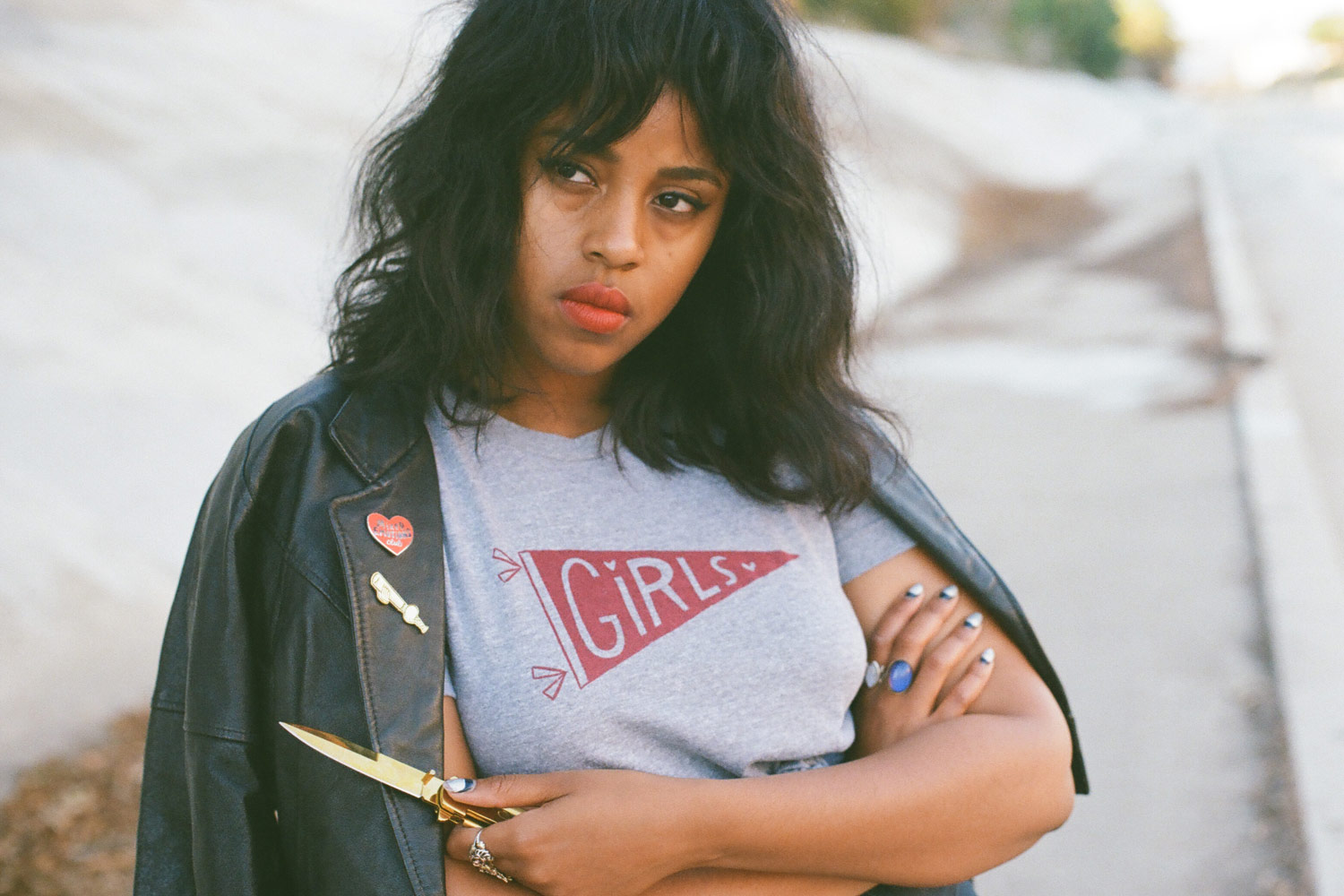
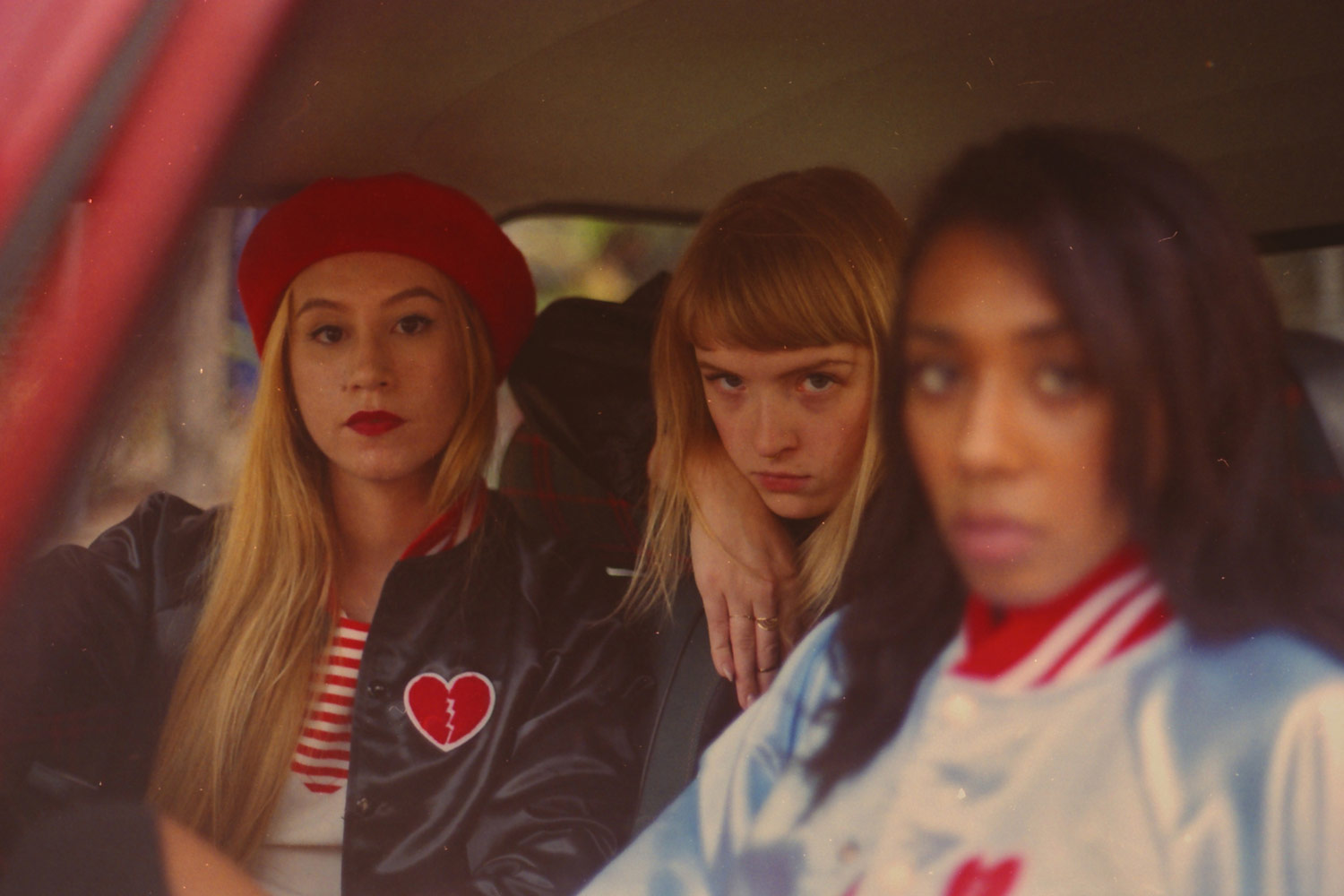
Do you think being in Nebraska lifted the pressure of worrying about money? And I don’t know about you, but when I go home to visit family, it’s a comforting place where I can be myself and not care.” Yeah, I did feel that way. I think not being in New York, not paying rent, and not eating out helped me save something like $3,000. I did feel free to be myself.
My parents have a great house, too. It’s a 1950s atomic ranch house, and my mom has a really eccentric sense of style. I hung out in the kitchen, which looks like a diner: it has red vintage linoleum with bright aqua walls and a sparkly diner booth for a kitchen table with a chandelier above. It was a really funky atmosphere, but I was also in Nebraska in the wintertime, so it was so dark most of the time. That also influenced my work: it was dark and moody, but also flamboyant.
So much of the work I do now was fueled by a period where I decided that I couldn’t care anymore. I felt so deeply depressed during my last winter in New York that I reached a breaking point, and it ended up being positive for me.
Was part of that because of the disconnect between the work you were actually doing and the work you wanted to be doing? Absolutely. I feel so much healthier now and a large part of that is because I’m making the work I wanted to all along. I get to be who I am. A few years ago, I wouldn’t have said I was being disingenuous, but I think I was. I didn’t feel confident and I was searching for who I was. I don’t feel that anymore.
Do you consider yourself a role model for women? Whether or not you want to be—or consider yourself to be—a role model, you are to some people. No matter what, whatever you put out into the world is going to make some sort of impression. My friend Stewart Scott-Curran, a designer in San Francisco, showed some of my age-appropriate pieces to his five-year-old daughter. She was super enthralled and made a bunch of drawings based on my drawings, like a gang of girls blowing bubble gum and stuff. He sent me the originals and that is my favorite thing in the universe: it’s so cool. I hear from a lot of teenage girls in Nebraska that my work makes them feel like their passions are worthwhile and that they don’t have to give up, even if they live in Lincoln, Nebraska. That’s amazing.
It feels great to me that people feel positively after seeing my work. I’m sure not everybody feels that way, but I don’t think my work is for everybody.
You also celebrate girlhood and badass women being themselves in your zine. Can you tell me a little more about that? I put out issues of the zine about twice a year. It’s full of b-sides from my sketchbook and things I’ve been working on so they can all be in one place.
It bums me out when I read about other women’s experiences of growing up and trying to figure out what it means to be a strong woman. I think I had a unique experience because I have so many good influences. From the get-go, I always felt like women were, or could be, in a place of power. My grandmothers are both very successful, strong, positive role models. When I was younger, they’d coach me to say that when I grew up, I wanted to be a feminist entomologist. My mom wanted me to be confident and strong, too. She didn’t want me to have some of the same body issues or insecurities she developed as a teenager.
My childhood was spent building up this idea of womanhood through the women in my life, so it’s not a struggle to come up with artwork about that. It’s so much a part of me, and it makes me sad that it’s not for some other women. That’s why it’s exciting that my work can be that for them. I love seeing people being positively impacted by it.
Yeah, I love that. Knowing what you know now about your career, is there anything you’d say to yourself at 18? If I could go back at talk to myself at any age, I feel like it’d be closer to 21, which isn’t even that long ago for me, because I’m 26 right now. I wish I could go back and say to myself that all of the power I felt back in college was right, and that I don’t have to second-guess myself or compare myself to other illustrators whose work I admire. I can admire them and still be myself. I would love to go back and say that to myself, but even if I had, there were still bills to pay. I think it’s always easy to feel like you’re less than if you’re in a desperate place.
What’s next for you? I’m collaborating with the guys from Mowgli Surf on a clothing collection, which will come out this summer. I also designed a fall clothing line, which is exciting. I’m happy to continue to bring my drawings to life—that’s the best part. The “Mixed Emotions Club” jacket was something I had drawn on one of my characters in 2014, so to have it premier in 2016 is really cool. I’m excited to toggle between these different parts of my personality and business practice and have them influence one another.
Is there any music you’re loving right now? Allie, who works with me and help runs my shop, is the lead singer of the band, Peach Kelli Pop. They’re awesome. I met her by doing artwork for her band and then I was looking for somebody to help me out part-time while another employee was on vacation. She offered to help and we’re kindred spirits.
I love her band, and I love a lot of musicians who are in LA right now. There is something really exciting happening in the music scene here. There are so many female-fronted bands, and that’s not an anomaly here.
Are you into any TV shows or have you seen any great movies recently? Better Call Saul is a total nail-biter, and I love it.
What are your go-to books, fiction or nonfiction? I’ve been reading a lot of books on the history of Los Angeles lately (nerd face emoji). Even if I’m not reading a new book, I’m trolling the LA Public Library catalogue of LA history. The street our office is on used to be Sonora Town and a mix of adobes and brothels in the late 1880’s! Now it’s “New Chinatown.”
I have to ask about the food in LA. Do you have a new favorite there? Almost all of my social time revolves around food. (laughing) I eat 8,000% more dim sum since moving to LA. Twice a week I go out to Arcadia, a primarily Asian suburb of LA, and get dim sum with Little Friends of Printmaking. It’s the best dim sum I’ve ever had! I also eat way more Mexican food now that I live in LA. I just had Guisados tacos for lunch today.
I’m so jealous. That’s one thing that New York doesn’t have.
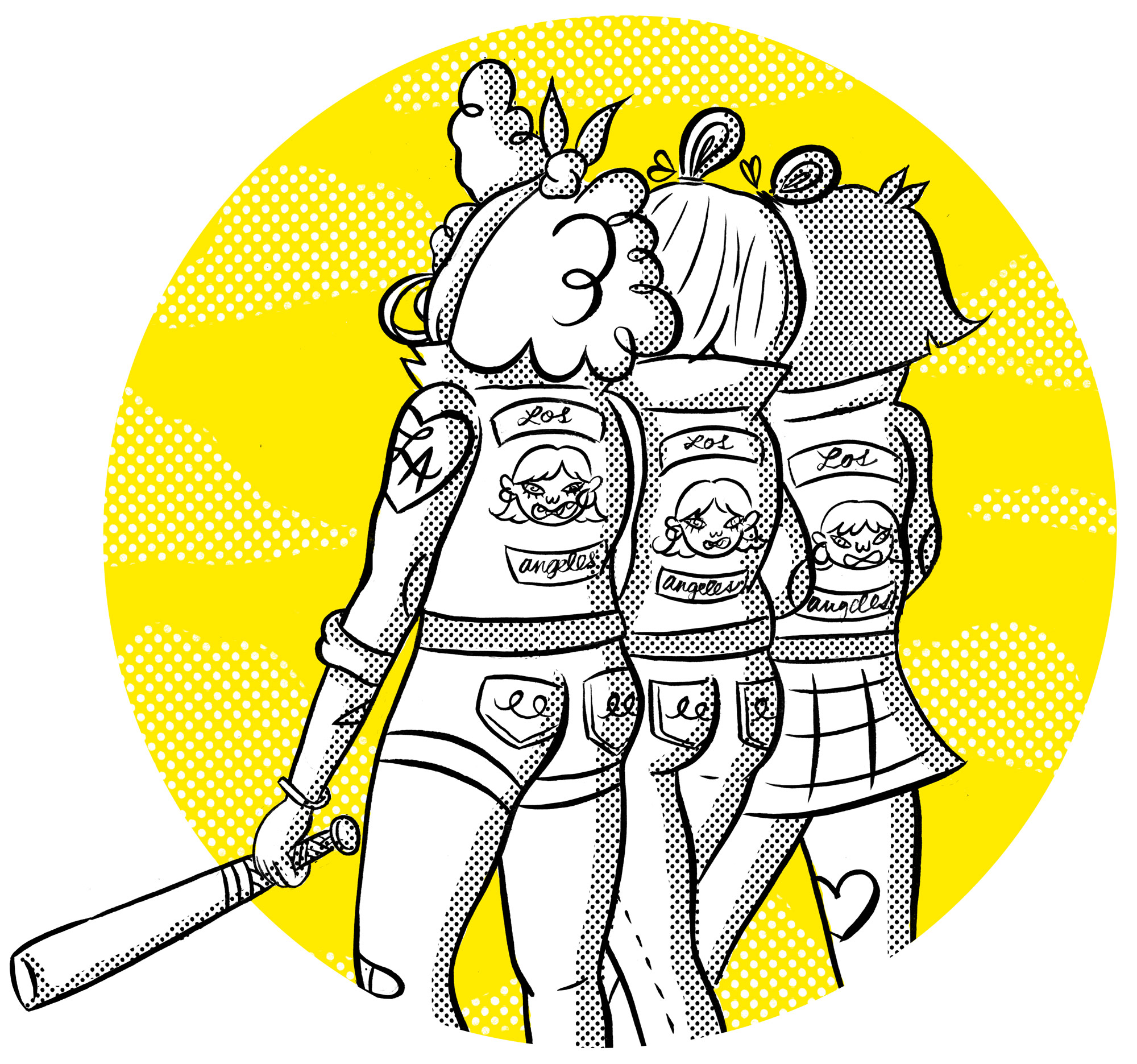
“My childhood was spent building up this idea of womanhood through the women in my life, so it’s not a struggle to come up with artwork about that. It’s so much a part of me, and it makes me sad that it’s not for some other women. That’s why it’s exciting that my work can be that for them.”
